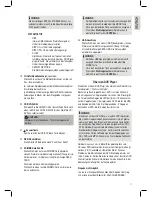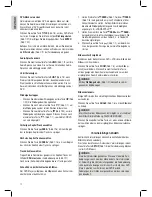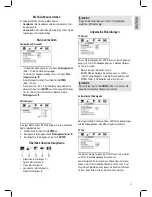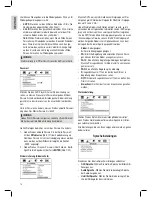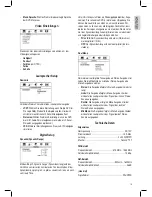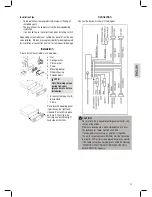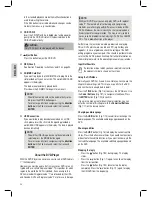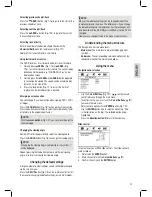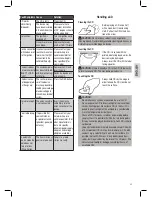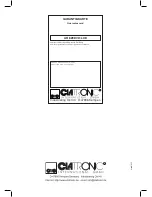
24
Important Information for installing
your carradio!
1.
The screws (h) of the transport locking device should
be removed before installation, as otherwise the CD
cannot be inserted.
2. The device is designed for the minus pole of the battery,
which must be connected to the body of the vehicle. Please
check this before installation.
3. When installing/connecting your device please note that not
every vehicle is equipped with an “ISO connection”. In this
case we recommend the use of an ISO adapter specifically
designed for your vehicle.
Adapters are available from car accessory shops and/or
from your vehicle workshop.
4. Depending on the specific car type, different wiring connec-
tion of the “Du” wire (Constant current connection)
are available. (However, this is necessary for storing the
radio stations).
In order to guarantee all functions, installation in line with
these instructions is essential. In cases of doubt please
contact an authorised car workshop.
Due to the various types of motor vehicles and motor
manufacturers, it is not possible to guarantee that the pin
assignment of the ISO plug is correct, even if the ISO plug
connections fit together mechanically. It may therefore
be necessary to modify the electrical connection or use
vehicle-specific adapters.
NOTE:
If the device is correctly connected, the radio can be
switched on and off via the ignition. If the stored stations
are lost, this indicates that the radio is not receiving any
“cont”, current which is required for storing the
stations.
CAUTION:
Where there is a connection to “cont”
without
the ignition being switched on, the car battery might be
drained of power even if the radio is switched off. This
may even result in the battery becoming completely flat.
5. The angle of inclination when a car radio is installed
must not exceed 20°, as in the case of greater angles of
inclination the function of the car radio (CD Player) can no
longer be guaranteed.
6. Depending on the specific car type, interferences can
be possibly arise during radio/CD/DVD operation. These
interferences can avoided easily with an additional
Interferences
filter. Your car radio is originally prepared
with an Interference Filter already.
In these case, please contact your authorized car dealer.
7. When installing your radio please ensure that there is
enough space at the rear of the radio to ensure sufficient
cooling.
8. For the antenna connection there are two different norms.
The first of these is the old (50 ohm) version with a long
protruding round contact on the vehicle and a round socket
on the radio end. The second is the ISO-standardised anten-
na plug (150 ohm). Adapters for both formats are available
from accessory manufacturers and/or your car workshop.
NOTE:
Important information for VW/Audi vehicles:
The
active antenna requires voltage on the shielding of the
antenna coaxial cable, without which reception is unsatis-
factory. An antenna adapter with phantom power supply
will solve this problem.
Operating Instructions
1. If the front control panel is removed while in the Radio or
CD Mode, the device continues the playback for a few
minutes and then switches off.
2. Any errors (ERROR) occurring during operation can be cor-
rected by pressing the RES button. Use a piece of wire or
similar item to press the RES button (22) in order to return
the electronics to its original state.
3. If the interior of the vehicle becomes very hot, for example
after standing in direct sunlight for a prolonged period, do
not switch on the player until the inside of the vehicle has
cooled down a little after you have been driving for a few
minutes.
4. In order to keep the removable control panel in a safe place
you should always use the protective case provided.
5. Playback of CDs/DVD produced by the user cannot be gua-
ranteed due to the large variety of software and CD/DVD
media available.
Starting up
Remote control battery installation
WARNING:
Leaking out battery acid can damage your health. Remove the
battery from the battery compartment as soon as it is exhaus-
ted or if the remote control is not going to be used for a longer
period of time. Wipe up leaked out battery acid with a cloth. In
case of skin contact immediately wash the affected area. Seek
medical advice if battery acid has been swallowed. In case of
contact with your eyes wash out the eyes and seek medical
advice.
CAUTION:
When disposing of old batteries you should strictly comply
with the legal and environmental regulations applicable in your
country. Do not throw batteries into fire!


